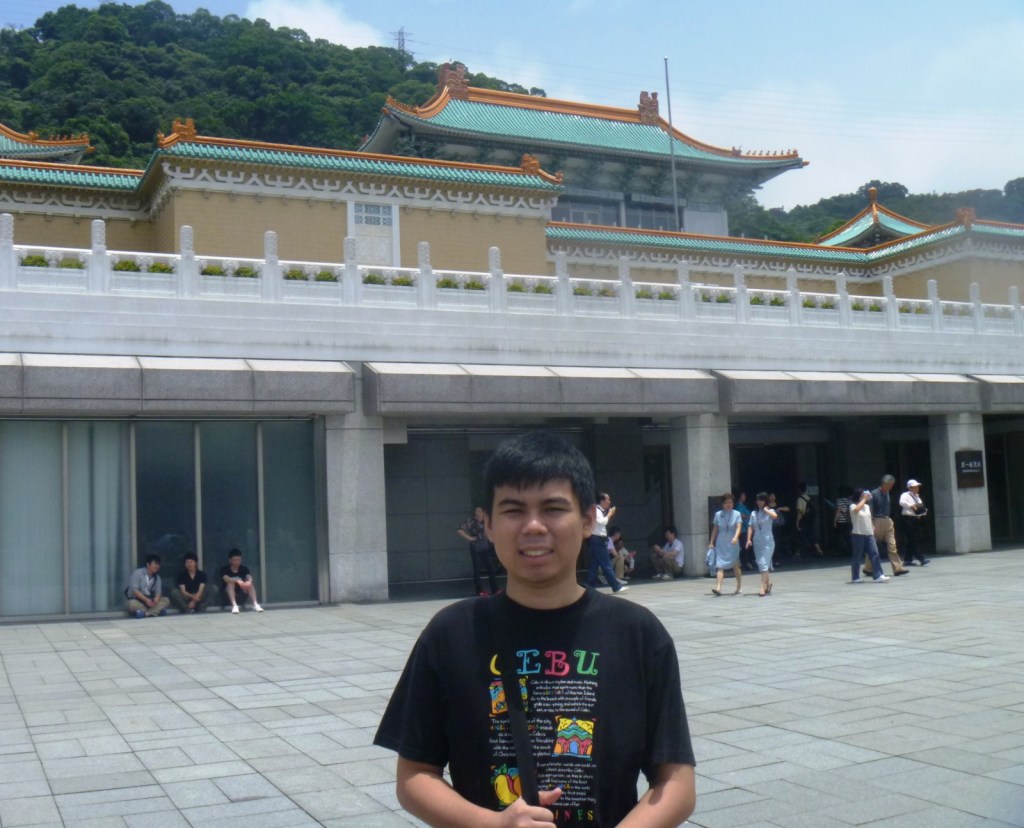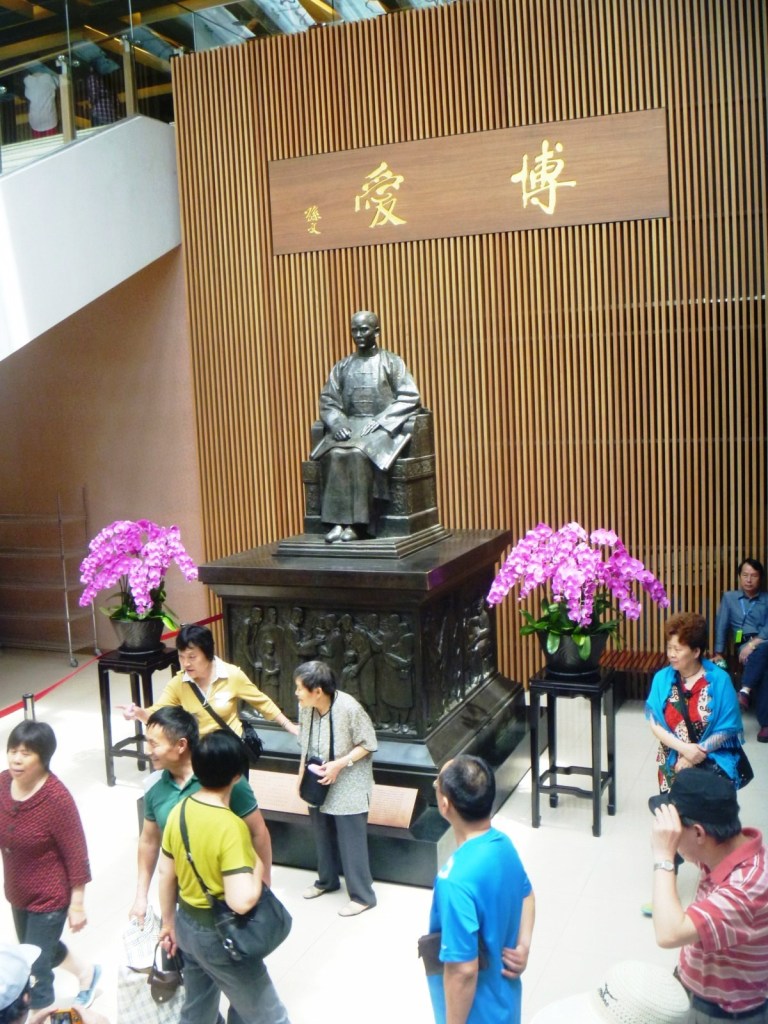After our visit to the Revolutionary Martyr’s Shrine, we were next driven to the Taiwan Handicraft Promotion Center for some souvenir shopping. On sale were porcelain, cloisonne, oil paper umbrellas, painted fans, wood carvings, crystal, etc. Reto, Gabriella, Jandy and I just browse around while Isha bought some souvenir gifts for her friends.
We next proceeded to the final destination in our half-day city tour – the 198-acre Taipei National Palace Museum. The national museum of Taiwan, it houses one of the world’s largest and most valuable collection of Chinese art treasures, with over 677,687 pieces of ancient Chinese artifacts and artworks, most of them high-quality pieces from the Chinese imperial collection of China’s ancient emperors, began over 1,000 years ago in the early Song Dynasty. The collection encompasses over 8,000 years of Chinese history, from the Neolithic Age to the late Qing Dynasty.
As it was a weekend, the museum was packed with visitors and we had to queue in line. We weren’t allowed to take photos of the collection. Donning our headphones, Mr. Pang gave us interesting descriptions of the 1,700 artifacts on display which, incidentally, is only 1% of the total collection which numbers some 93,000 items of Chinese calligraphy, porcelain, 6,044 cast bronzes, 5,200 scroll paintings, 12,104 pieces of jade, 3,200 examples of lacquer and enamel ware, figurines, assorted carvings, fans, rubbings, coins, textiles and many other artifacts from Beijing’s Forbidden City as well as 562,000 rare, traditional books and documents. The rest of the collection is stored in temperature-controlled basement vaults. The displays are rotated once every 3 months, which means 60,000 pieces can be viewed in a year but it would take us nearly 12 years to see them all.
The most famous and notable pieces on display at the museum are the Jadeite Cabbage (part of the dowry of the Qing Dynasty concubine Jin), the Meat-Shaped Stone, Agate Finger Citrons, White Jade Branch of Elegant Lychee, T’ien-huang Stone Miniature Mountain, the Jiu Manzhou Dang (a set of Manchu archives), the Carved Olive-stone Boat, the Jadeite Screen Insert and “One Hundred Horses,” a painting done in 1728 by Giuseppe Castiglione.
During the civil war, these important treasures were transferred, in 2,972 boxes, to Taiwan to evade damage. This transition brought the re-establishment of the National Palace Museum (it was first called Chungsan Museum). Designed by Huang Baoyu, its construction was started in 1962 and the museum was inaugurated on November 12, 1965, the 100th anniversary of the birth of the great Chinese revolutionary Sun Yat-sen (1866-1925).
The museum has 4 floors, the first, second and third floors are used for exhibitions while the fourth floor is a lounge where visitors can rest. On the left side of the museum hall is the Chih-shan Garden (showcases many of the elements of traditional Chinese gardening art) while on the right is the Chih-te Garden. Also part of the Taipei National Palace Museum is the Chang Dai-ch’ien Memorial Residence, the home of the celebrated painter Chang Dai-ch’ien (1901-1984).
Taiwan Handicraft Promotion Center: No.1 Hsu Chow Rd., Taipei, Taiwan. Tel:(+886-2) 2393-3655. Fax: (+886-2) 2393-7330. Email: thpc@handicraft.org.tw. Website: www.handicraft.org.tw.
National Palace Museum: No.221, Sec. 2, Zhishan Rd., Shilin District, Taipei City 11143, Taiwan. Tel: (+886-2) 2881-2021. Website: www.npm.gov.tw. Open daily, 9 AM-5 PM. Admission: NT$160.
How to Get There: take the MRT Danshui Line to the Shilin Station then take bus R30 (Red 30 – Low-floor bus) to the National Palace Museum. Other routes that will take you to and near the Museum plaza are buses 255, 304, 815 (Sanchung – NPM Line), Minibus 18 and Minibus 19.
You can also take the MRT Wenhu Line to the Dazhi Station then take bus B13 (Brown 13) to the National Palace Museum, alighting before the Front Facade Plaza of the Museum. Alternatively, visitors may choose to take the Wenhu Line and get off at Jiannan Rd. Station, then take bus B20 (Brown 20) to NPM’s front entrance (Main Building).





